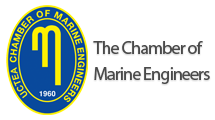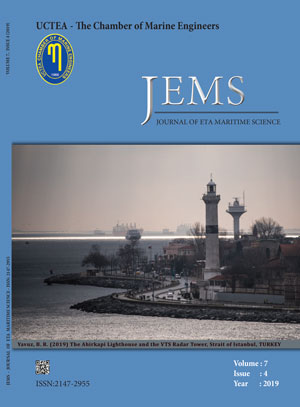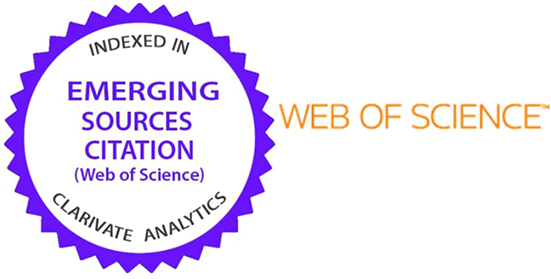

JEMS apply the Creative Commons Attribution NonCommercial 4.0 International Licence to all manuscripts to be published
ABSTRACTING & INDEXING
Volume: 7 Issue: 4 - 2019
| EDITORIAL (ED) | |
| 1. | Editorial Selçuk Nas Pages 264 - 265 Abstract | |
| FULL TEXT | |
| 2. | Journal of ETA Maritime Science (Volume: 7 Issue: 4, 2019) Selçuk Nas Pages 264 - 367 Abstract | |
| ORIGINAL RESEARCH (AR) | |
| 3. | Usability of Human Error Assessment and Reduction Technique with a 4M framework (HEART4M) A Case Study on Ship Grounding Accidents Ludfi Pratiwi Bowo, Masao Furusho doi: 10.5505/jems.2019.54775 Pages 266 - 279 Human error plays a vital role in causing maritime accidents. This paper presents the analysis of human factors in 52 grounding accident reports of ships greater than 10,000 GT retrieved from 11 national investigation boards. In this study, the categorization of error-producing conditions (EPCs) from the Human Error Assessment and Reduction Technique (HEART) methodology to 4M (Man, Machine, Media, and Management) framework, EPC4M was carried out. This study aims to categorize the EPCs to the 4M framework to better explain these other factors that relate to human factors. There were 18 EPCs in man factors, 3 EPCs in machine factors, 1 EPC in media factors, and 16 EPCs in management factors. Three types of generic tasks were obtained in this grounding analysis, and 259 relevance EPC4M were acquired. EPCs related to management factors were the primary causes of such accidents. The average human error probability for these cases was around 55%. |
| 4. | Academicians Viewpoint on Port Managers Prior Competencies in terms of Environmental Sustainability Performance of Container Port Enterprises in Turkey Özgür Tezcan, Barış Kuleyin doi: 10.5505/jems.2019.29491 Pages 280 - 292 Ports regard sustainability as of great importance in their efforts to sustain their corporate feature aiming to use resources effectively and comply with the environment and the society in which they are located. The activities an organization carries out its sustainability performance. Full compliance of this performance with the relevant natural and biological environment is greatly important. Thats why the main point discussed in this study is the environmental sustainability performance of the port enterprises. As the competencies of port managers pay an important role in this performance, this study aims to scrutinize and evaluate these competencies of port operation managers in particular. To determine these competencies, a three-step Delphi technique has been used. This technique has been conducted through an expert group of 13 academicians. The results revealed 15 competency items. The identified competencies are believed to contribute to the effective process of selecting/employing managers in port organizations which will ensure corporate sustainability. |
| 5. | A Quantitative Analysis of the Factors That May Cause Occupational Accidents at Ports Mahmut Mollaoğlu, Umur Bucak, Hakan Demirel doi: 10.5505/jems.2019.15238 Pages 294 - 303 In recent years, the concept of sustainability has come to the forefront as a requirement of strategic management in ports. The safety component which has an important place in the social dimension of sustainability, is very valuable in terms of minimizing work accidents at the port area. In order to take precautions against the work accident threat, understanding which risks cause work accidents is as important as knowing how these accidents occur. The aim of this study is to identify risks in port area that cause Occupational Health and Safety (OHS) violations and to reveal prominent risks as a result of expert reviews. Fuzzy AHP method is employed to analyze priority perception of the experts. Accordingly, risks which are Overconfidence and Disengagement, Inter-Department and In-Department Communication Gap, Lack of Attention, Failure to Take Required Precautions during Repair and Maintenance have been come into prominence in comparison to other factors. It can be concluded that human factor and communication level have vital role to provide OHS in port area. |
| 6. | Strait of İstanbul Crossing Simulation of a VLCC Type Ship in Autopilot Mode İsmail Bayezit, Rahman Bitirgen, Muhsin Hançer, Omer Kemal Kinaci, Omer Kemal Kinaci doi: 10.5505/jems.2019.83798 Pages 304 - 316 According to Maritime Traffic Regulations for the Turkish Straits, steering shall always be by hand and automatic steering devices shall never be used. However, it is considered that recent technological boost in computer science and control engineering opened this regulation to discussion; as today, automatic steering devices are a lot more safer. In this study, navigation of a 320m long ship through the Strait of İstanbul in autopilot mode was simulated. Ship motion equations are nonlinear and have three degree-of-freedom. Rudder was controlled by PD controller. Maximum speed of the ship during navigation was 10 knots as per traffic regulations. It was assumed that there was no current in Strait of İstanbul during ships passage. Proportional and derivative gains were optimized by genetic algorithm. Simulation results show that the ship can safely voyage through the Strait of İstanbul in autopilot mode. |
| 7. | ACFD Study On the Hydrodynamic Characteristics of the Antifouling Paints Utku Cem Karabulut, Yavuz Hakan Özdemir, Barış Barlas doi: 10.5505/jems.2019.63644 Pages 318 - 331 This paper presents a computational fluid dynamics (CFD) approach which can be used to investigate the hydrodynamic performances of various antifouling paints. Steady Reynolds - Averaged - Navier - Stokes (RANS) equations were solved for the flows around a flat plate at Reynolds number of 2,8×〖10〗^6 and 5,5×〖10〗^6. The surface roughness effects were modelled as downward shift of the velocity profile at the log law region of the boundary layer. Granvilles similarity law was used to extrapolate the results for a full scale ship. Results are in good agreement with the previous experimental and numerical studies. |
| 8. | Parametric Sail Analysis of Sailing Yachts in 9-20 Meters Sarih Sarı, Muhsin Aydın doi: 10.5505/jems.2019.52714 Pages 332 - 343 The study was carried out in order to determine the dimensions of the sailing parameters for the sailing yachts in the most appropriate way and to estimate the performance values for the determined sail and boat. The length overall range, which is widely used for this purpose, is determined between 9 and 20 m. In order to make calculations and estimations in this range, 3 boats having 9.15, 14.25 and 19.50 m full size were formed. 81 different sailing equipment was created to correspond to each boat. For each boat and sailing equipment, it was examined at wind speeds of 6, 12 and 20 knots and in angles of 45, 90 and 110 degrees in wind direction. In the case of the opposite direction of the wind, 90, 120 and 140 degree angles were examined. Based on the average of the 25% of the results of the surveys, it was possible to determine the dimensions of sailing equipment that could be considered useful for all wind conditions between 9 and 20 m in length. In addition, estimation of boat speed, drift force and heel angle performance values of the desired length of the vessel is provided with an error rate of less than 2%. |
| 9. | Antecedents and Consequences of Cybersecurity Awareness: A Case Study for Turkish Maritime Sector Pelin Bolat, Gizem Kayişoğlu doi: 10.5505/jems.2019.85057 Pages 344 - 360 Cybersecurity awareness has arisen as an important issue in maritime transportation as well as in other sectors. In this paper, after analyzing maritime cybersecurity literature, it is aimed to understand the factors of antecedents and consequences of cybersecurity awareness in maritime domain by taking Turkish Maritime Sector as a case study. Structural Equation Modeling is used for understanding the factors by validating a questionnaire data from 211 maritime employees who graduated from Department of Marine Transportation Management Engineering and Marine Engineering in Turkey. It is found that (a) education is a significant factor in enhancing the maritime cybersecurity awareness for employees behavior towards cybersecurity; (b) cybersecurity incidents or experiences significantly influences employees cybersecurity awareness and their behavior; (c) maritime cybersecurity awareness significantly affect secure user behavior. In addition, results show that rules and policies with information sharing do not have significant effect on cybersecurity awareness and development secure employee behavior. |










